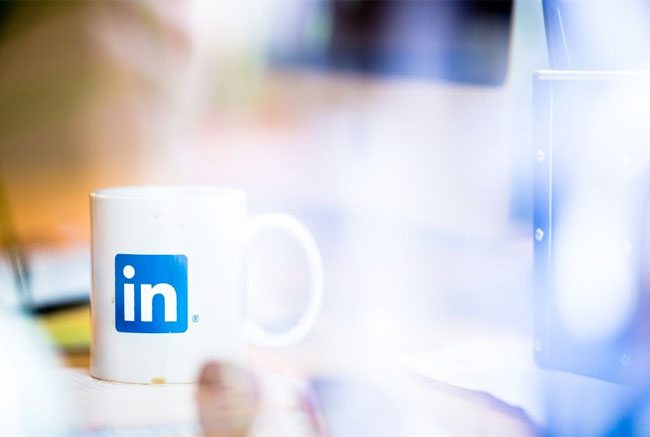By Kathleen Gallagher
Milwaukee Journal Sentinel
WWR Article Summary (tl;dr) For late adopters of linkedin, this is a good article to reaffirm your decision to join the online social media platform. For women in business who want to network there are 414 million other people in the world using the service, ready to connect.
MILWAUKEE
Mike Mallwitz is a no-nonsense executive who for years swore by an old-school communications method: picking up the phone and calling.
Now, however, Mallwitz is increasingly relying on a different approach: LinkedIn.
As president of Busch Precision Inc., a nearly 110-year-old Milwaukee machine shop and rebuilder, Mallwitz says he’s particularly interested in congratulating people for their accomplishments. Maybe he sees a customer featured in a news story, or hears about a former employee who got hired for a new job.
LinkedIn, he says, is a great way to give someone a pat on the back.
“I was hesitant, there’s no question,” Mallwitz said. But in 2009, after taking a class about how to do it, Mallwitz says he slowly became a convert.
Mallwitz is one of 414 million people in the world, by LinkedIn’s count, using the service, which is an online social media platform for business professionals.
As with many technology startups, LinkedIn’s path has by no means been free of obstacles. The social media world is highly competitive, and shareholders can be very demanding.
The company went public in 2011, and its shares traded above $250 as recently as last fall. But a bad revenue forecast, along with concerns over its decision to scrap a business-to-business ad network, sent the stock plummeting more than 40 percent on Feb. 5 to close at $108.
It slid to $100 on Feb. 9 but has since recovered somewhat, trading around $118 Monday. Some analysts contended the massive sell-off was an overreaction.
Different from Facebook, Twitter, Slack and other social media networks, LinkedIn is mainly used by business people to find new customers, employers and employees, and to maintain business connections.
“Don’t think of LinkedIn as a social media tool; think of it as the best database of business professionals you ever had,” said Wayne Breitbarth, a Milwaukee-based LinkedIn trainer, speaker and consultant.
In the past, companies had to buy databases, and by the time they arrived they were often outdated, Breitbarth said. Not only that, the information was unreliable.
With LinkedIn, which was founded in Mountain View, Calif., in 2002, users keep their own information up-to-date, and are typically very motivated to do so.
“Purchasing managers are on it not because they want to be bothered by sales guys who call on them,” Breitbarth said. “They realize that in order to get called by recruiters who specialize in purchasing managers, they’ve got to be on it.”
Breitbarth has taught hundreds of LinkedIn training classes at companies, colleges and even in churches with job ministries _ he does the latter for free. He says he has a mailing list of 25,000 people and has sold nearly 100,000 copies of his book “The Power Formula for LinkedIn Success.” And he says it is his observation that many baby boomers are still having trouble understanding the power of LinkedIn.
“It’s holding them back in this new economy that we have,” Breitbarth said.
Dena Wortzel, director of the Wisconsin Humanities Council, a history and culture nonprofit, was hesitant about LinkedIn because she says she didn’t understand how she could use it. But recently, she discovered how she could use it to research candidates for a grant program director job and was pleasantly surprised to realize people in the fields of culture and education were using it too.
Breitbarth said he likes to tell a story about using LinkedIn for finding potential job applicants in order to convert the holdouts.
Several years ago, Breitbarth’s partner in a furniture store they ran together said he was going to run an ad seeking an interior designer. Breitbarth asked for half an hour to try something different. During that time he said he did an advanced search on LinkedIn for interior designers in the area, got 100 hits and culled that group down to a list of 13 people with “resumes on steroids.”
“It was like I threw an interior designer party and everyone showed up at a bar downtown,” Breitbarth said.
LinkedIn is very useful for researching people before meeting them, said Doug Watson, president and chief executive officer of The Howard Co., a Milwaukee-area maker of menu boards and graphics. And it’s critical for job seekers to have a strong presence on it, he said.
“If I’m looking to hire somebody and I go out on LinkedIn and they’re not there or their profile is poorly done, it certainly flavors whether I want to go forward with them or not,” Watson said.
LinkedIn is a necessary business tool, said Troy Vosseller, the co-founder of a startup accelerator called gener8tor. He said he uses LinkedIn nearly every day to research companies.
“We frequently will use search filters based on where people went to college to find friendly audiences within a company or firm we’re trying to reach out to,” Vosseller said.
Software engineers like Nick Gartmann have had LinkedIn-like tools for years in their circles to find employers and employees, said the partner at RokkinCat LLC, a Milwaukee software contractor that specializes in building new products.
But even in his industry, recruiters use LinkedIn heavily to find people, he said. So heavily, in fact, that many tools have been built to help people look up different recruiters and see how many times they’ve sent messages to people.
As with Facebook and other social media platforms, there’s social pressure to have a LinkedIn account. For business people it’s “kind of weird” not to have a LinkedIn account, Gartmann said.
“Like any social media platform,” Gartmann said, “you have to participate heavily in it to get big value from it.”














































































































































































































































































































































































